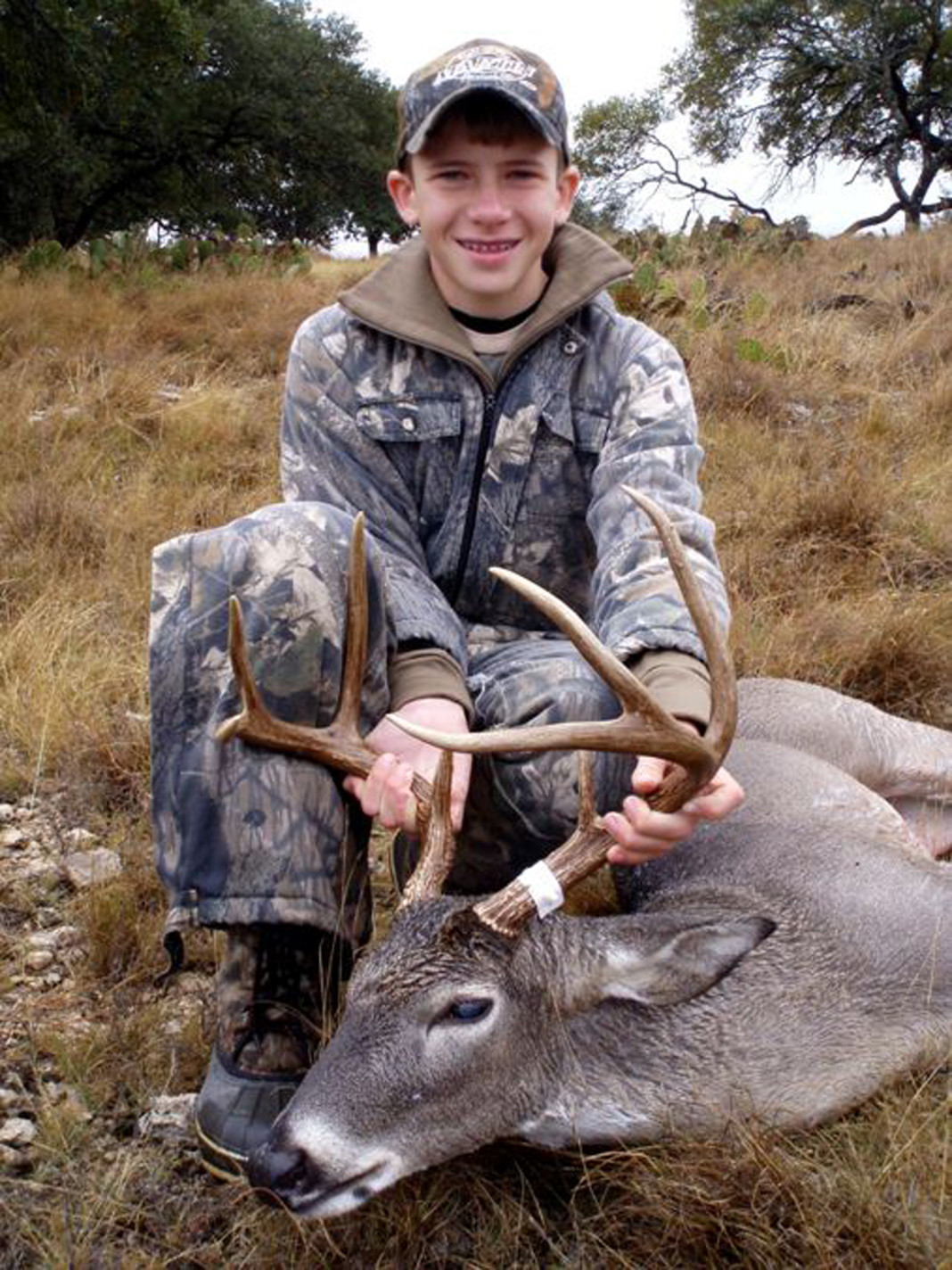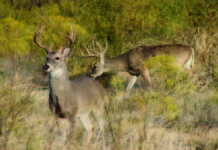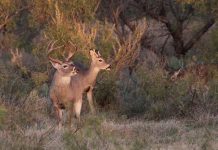The extended procession sprinkled with tinges of orange guardedly steps among crop stubble as a pair of wiggling pups bashfully scuttle along terrain flocked with patches of white.
In an instant, what appears to be a spacious grin on one pointer’s face is replaced by a reserved stare as the dog freezes at a distinctive scent and sight. Moments later, the other canine’s looping path sends it into a collision course with the veiled quarry. It’s too much attention for the reclusive bird, and seconds later the pheasant bursts skyward and draws the complementary shouldering of arms.
The drab tint of feathers gives the bird away as a female, bringing the standard chorus of “Hen … hen … hen” as it flies parallel to the row of hunters.
The shouts that linger in the icy air about as long as a hefty warm breath don’t make it to the end of the line, and as the bird hovers low and into the sun, a single shotgun barks, sending the bird down. Wide eyes lock for a moment up and down the line and a half minute later an eager dog returns with the illegal harvest in its jowls.
After realizing the case of mistaken identity, the hunter on the end who pulled the trigger sheepishly strides over to a flurry of questions before scooping up the bird and placing it in a vest pocket that held a couple of gaudily hued male pheasants. Before quietly assuming his place on the far edge, the hunter admits to the gaffe, declaring that even if he didn’t see a game warden that day he would contact one and come clean about the incident.
He didn’t load his shotgun again for the rest of the outing. He also didn’t see a warden waiting at the end of the field, and whether he contacted one afterward the rest of our hunting party likely will never know.
This scenario took place when I was in high school in the Panhandle and I will never forget it, mostly because it raises a number of ethical hunting questions.
What would you do? Leave the bird where it fell or pick it up?
Either way, the hunter committed a wildlife violation, even though he thoroughly made a mistake and owned up to it.
With fall hunting seasons upon us, it’s important to remember that these pursuits are privileges, and the responsibility of following game laws rests with each individual. I certainly believe that most hunters never would knowingly commit violations of state and federal wildlife regulations, but every time you pull the trigger you’re also making a conscious decision to take life.
That’s not one to be taken lightly.
There’s no doubt some folks go overboard for a variety of reasons when it comes to hunting activities, and while I’ve heard tales of extensive wanton poaching and unscrupulous doings from near and abroad, I’ve also heard accounts of good people simply being in the wrong place at the wrong time, which can bring the same consequences.
A longtime outdoor writer and good family friend who always has followed the letter of the law was found to be in violation of a game law at the beginning of his career, something that easily could have derailed his illustrious path and would have been an utter shame. A young game warden, who would be promoted into the upper echelons of the Texas Parks and Wildlife Department, was checking dove hunters during an outing some years back, and he happened upon the field that my friend was hunting.
After scoping out the surroundings, the warden attempted to talk to as many hunters as he could. It was upon making the acquaintance of this warden that my friend found out he unknowingly had been hunting in a “baited” field. He had been extended an invite to hunt by someone he was familiar with, and there was no reason for him to suspect any situation that would run afoul of the law. And while the direct area he had been sitting in and waiting for doves wasn’t baited, a portion of the field was, hence he was found to be in violation of state and federal regulations prohibiting the act.
The baiting rules for doves aren’t as extensive as those for waterfowl, but they nonetheless are clear about what is or isn’t legal. According to the U.S. Fish and Wildlife Service, a hunter may be cited for hunting over bait, even if they didn’t know it was there.
Another bird hunting scenario brings up ethical questions, too.
Under migratory game bird regulations, shooting and possessing “party limits” is illegal, yet it’s the accepted practice in many duck, goose, quail and pheasant hunting situations. It would be almost impossible for a game warden to prove you shot more birds than you were supposed to in these instances unless you did something foolish like leave a field with five pheasants in your hunting vest.
I won’t partake in hunts of this nature simply because I’m uncomfortable with it, and if I’m going hunting, I’d like to personally harvest my own game. If you’re lucky enough to limit out and others are still shooting, the ethical thing to do is put up your shotgun.
It’s also the legal thing to do.
The idea of party limits isn’t singular to hunting. It was common practice for years among many fishing guides up and down the Texas coast and elsewhere to allow paying customers to take the guide’s limit of fish in addition to what they caught. That meant if a guide took three people out and they had a successful day, four limits of fish hit the cleaning table, even if the guide never picked up a rod.
Was it illegal? No, theoretically. If four guys came back to the dock, were checked by a game warden and he saw four limits of redfish, there’s no way to know that the three paying anglers each caught and kept an extra fish.
Was it unethical? No doubt. This precisely is why state fishing regulations were amended to prohibit that kind of activity.
“The bag limit for a guided fishing party is equal to the total number of persons in the boat licensed to fish or otherwise exempt from holding a license minus each fishing guide and fishing guide deckhand multiplied by the bag limit for each species harvested,” according to state fishing regulations.
Ethics and character boils down to what you do when no one’s watching. When it comes to adhering to game laws and recruiting youngsters into the outdoors, which I think go hand in hand, sometimes someone else is looking.
It’s up to us to make sure that we’re doing things the right way.






















